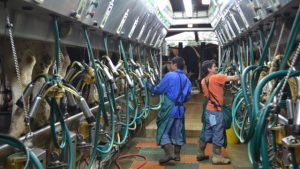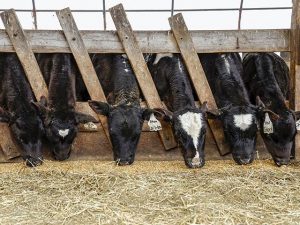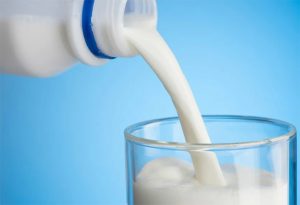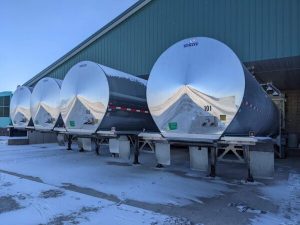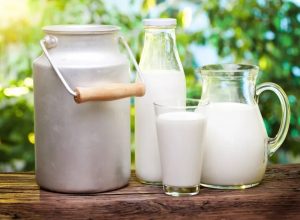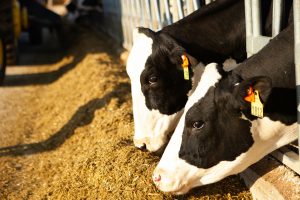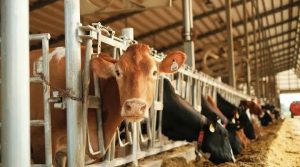
A pair of Illinois dairy leaders advocated for reforms to the pricing formulas in the 11 Federal Milk Marketing Orders Sept. 15, outlining for U.S. Department of Agriculture officials changes that would bring stability to milk pricing and fairness among producers.

The testimony from Frank Doll and Bryan Henrichs came during a national FMMO hearing that has been ongoing since Aug. 23 and is set to continue through the end of the month.
Doll, a third-generation Bond County dairyman who milks 225 cows and manages a beef herd and grain operation, serves as president of the Prairie Farms board of directors, president of the St. Louis District Dairy Council and vice president of Bond County Farm Bureau.
Henrichs, a third-generation Clinton County dairyman who milks 310 cows and operates a custom harvesting business, also serves on the Prairie Farms board of directors and is a member of both the Illinois Milk Promotion Board and Illinois Milk Producers Association.
Both expressed support for a pair of proposals from the National Milk Producers Federation and supported by American Farm Bureau Federation related to Class I milk pricing.
Specifically, Doll backed NMPF Proposal 19, which calls for updating the Class I differential pricing surface throughout the United States.
The topic of milk pricing “comes up almost every day” in conversations Doll has with other dairy farmers, he said, and continues to influence decisions around inputs, labor and managing the herd size.
Doll, who ships his milk 100 to 150 miles southeast to two different plants in Indiana and Kentucky, said the cost to transport it to market has increased 32.8% in the past six years and demand for milk in the southeast market continues to grow.
The price of his milk, in turn, has increased because of the pricing surface being larger to help defray some of the milk costs associated with the additional miles, Doll explained.
“The price surface has not been updated in over 20 years, so it’s time to make changes so we can help offset the additional costs we are experiencing on the farm,” Doll said.
Doll further noted that even though his milk can travel almost 100 miles fewer than milk moving from northern markets to the St. Louis market, he receives a 65% higher value while the longer-transported milk receives less of an incentive from the price surface, demonstrating why “the entire price surface needs to be reviewed.”
Asked by a USDA Agricultural Marketing Service official to describe what “orderly marketing” would look like, Doll responded that the FMMO should be adjusted to match shifts in population, demand and milk production.
“A more fair price for milk,” Doll said. “The last several years of the milk price swings that are so the lows stay so low so long and the highs don’t stay very high very long, so we’re struggling to keep people in the market.”

Henrichs, meanwhile, backed NMPF Proposal 13, which calls for returning to the “higher of” for calculating the Federal Order Reform Class I Skim Mover.
“We have seen many challenges with milk pricing to the producer community through price volatility and disparity of milk pay prices among dairy producers,” Henrichs said.
Henrichs explained that although the FMMO is intended to price milk similarly for all dairy producers, many producers can depool their milk “which has created disparity amongst dairy producers and disorderly marketing.”
Due to serving Class I milk plants around the St. Louis market, the milk from Henrichs’ own dairy operation cannot be depooled, he said.
“One of the reasons before for setting the Class I price on the ‘higher of’ was to ensure the Class I price was the highest and incentivize producers to ensure the Class I market had a secure supply,” Henrichs explained.
Yet with the ability of producers to depool, disorderly marketing has ensued because “there isn’t the incentive to serve the Class I market as they are getting a higher value for their milk,” Henrichs added.
Henrichs also outlined how the dairy industry moving to the “average of” in 2019 ultimately led to negative Producer Price Differentials (PPDs) and removed up to $750 million from producers’ milk checks, according to a NMPF analysis.
USDA in 2022 issued payments through the Pandemic Market Volatility Assistance Program to help recover some of those losses, but Henrichs said “the ‘higher of’ will ensure that the dairy producer is compensated at the time of the sale instead of later by some other form or support.”
Also asked what “orderly marketing” would look like, Henrichs responded some producers send their milk to a Class III over a Class I milk plant because the former offers higher prices.
“You would have people jumping in and out of which product, they want to sell them up to that day, because of the pricing disparity amongst the classes,” Henrichs said. “To me, the class pricing and the FMMOs are to stabilize pricing to producers in each order.”




